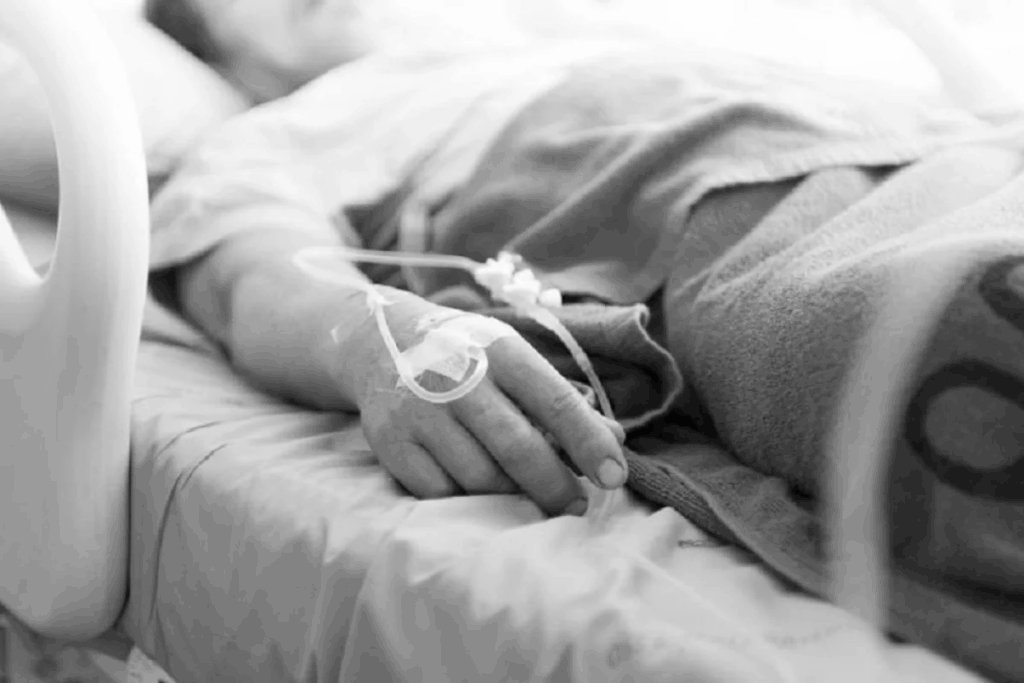
Clogged arteries can cause serious health problems, like heart attacks and strokes. At Liv Hospital, we understand the importance of clearing blockages to keep your heart healthy. Our expert team offers safe procedures to remove blockages.
We will guide you through the process of clearing clogged arteries. This includes advanced medical interventions like atherectomy and endarterectomy. We’ll cover the causes of clogged arteries, diagnostic tests, and treatment options. Our goal is to help you understand how to keep your arteries healthy.

Knowing the risks and causes of arterial blockages is key to a healthy heart. These blockages, or clogged arteries, happen when plaque builds up. This can lead to serious heart problems.
Plaque buildup in the arteries causes blockages. This plaque is made of fat, cholesterol, and other substances. Several factors can make this worse, including:
Clogged arteries often don’t show symptoms until a blockage is severe. But some people might feel:
The risks of blocked arteries are serious and can be deadly. If not treated, they can cause:
By understanding the causes, signs, and risks of arterial blockages, we can take steps to keep our hearts healthy. This helps prevent severe heart problems.

The journey to clear clogged arteries starts with a precise diagnosis. Finding out about arterial blockages is key to good treatment. It helps doctors choose the best plan for patients.
Several tests help figure out the extent of blockages. These include:
After tests, it’s important to understand the results. The results show if there are blockages, where they are, and how bad they are. This info helps doctors:
“Knowing your test results helps you take charge of your health. It lets you make smart choices about your heart.”
When blockages are very risky, like severe ones or with symptoms like chest pain, medical help is needed. Procedures like angioplasty, stenting, or bypass surgery might be suggested. This depends on the blockage’s severity and where it is.
These procedures aim to improve blood flow. Knowing when they’re needed is key for good treatment.
There are many ways to clean out arteries and improve blood flow. The right procedure depends on the blockage’s severity and location.
Several medical procedures can clean out arteries. Each has its own benefits and when to use it.
Doctors consider many factors to choose a procedure. These include the blockage’s severity, location, and your health. They use tests like angiograms and ultrasounds to decide.
Before your procedure, follow your doctor’s instructions. This might mean stopping certain medicines, fasting, and having someone drive you home.
Knowing about clearing clogged arteries procedures helps you make informed choices. It lets you work with your healthcare team for the best results.
Healthcare providers use atherectomy to clear blocked arteries. This reduces the risk of heart problems. It’s a precise way to remove plaque, helping those with blocked arteries.
Atherectomy uses a catheter with a device to cut away plaque. It’s used for treating artery diseases. The catheter is guided to the blockage, where it removes the plaque.
We use advanced imaging to place the catheter accurately. This method is less invasive, reducing risks and speeding up recovery.
There are different atherectomy techniques, each with its own benefits. These include:
Each technique is chosen based on the patient’s condition and the blockage.
Recovery from atherectomy is usually quick. Most patients can go back to normal activities in a few days. The procedure improves blood flow and reduces symptoms.
We closely monitor patients during recovery to ensure they’re healing well. Success depends on the patient’s health and following care instructions.
For those with severe blockages, endarterectomy is a surgical fix. It cleans out arteries by removing plaque. This helps restore blood flow.
The surgery is done under general or local anesthesia, based on the blockage’s location and severity. Here’s how it’s done:
Carotid endarterectomy targets the carotid arteries, which supply blood to the brain. It’s a specific type aimed at preventing strokes by removing plaque from these arteries.
| Procedure Type | Artery Involved | Purpose |
| Carotid Endarterectomy | Carotid Arteries | Prevent Stroke |
| Coronary Endarterectomy | Coronary Arteries | Improve Heart Blood Flow |
| Femoral Endarterectomy | Femoral Arteries | Improve Leg Blood Flow |
After surgery, patients are watched in the recovery room for any immediate issues. The recovery time varies based on the patient’s health and the surgery type.
Typical Recovery Steps:
Understanding endarterectomy helps patients prepare for surgery and recovery. This knowledge aids in making informed decisions about heart health.
Keeping the heart healthy means opening blocked arteries. Angioplasty with stenting is a common way to do this. It uses a balloon to widen the artery and a stent to keep it open. This method is less invasive and is a key part of treating blockages.
Angioplasty, or PTA, involves inserting a catheter with a balloon tip into a narrowed artery. The balloon is then inflated to push aside plaque, widening the artery. Often, a stent is used to ensure the artery stays open.
This method has changed how we treat blocked arteries, making it a less invasive option than surgery. It’s usually done under local anesthesia, and patients can often go home the same day.
Stents are small, mesh tubes that keep the artery open after angioplasty. There are different types, including:
| Stent Type | Benefits | Potential Risks |
| Bare-metal | Simple, effective | Higher risk of re-narrowing |
| Drug-eluting | Reduces re-narrowing | Potential for blood clots |
| Bioresorbable | Dissolves over time, reducing long-term risks | Limited long-term data |
Recovery from angioplasty and stenting is usually quick. Patients are monitored for a few hours and can often go home the same day. Following post-procedure instructions carefully is key for healing.
Common recommendations include:
Understanding angioplasty and stenting helps patients make informed choices. This procedure has greatly improved cardiovascular care, providing a less invasive way to open blocked arteries.
Bypass surgery, or coronary artery bypass grafting, is a surgery that helps blood flow around blocked arteries. It’s often needed for severe blockages that other treatments can’t fix.
We suggest bypass surgery for those with big blockages in their heart arteries. These blockages can cause chest pain or trouble breathing. Doctors decide after tests like angiograms.
The table below shows what makes doctors think of bypass surgery:
| Factor | Description |
| Severity of Blockage | The degree to which the artery is blocked. |
| Symptoms | Presence of symptoms like chest pain or shortness of breath. |
| Overall Health | The patient’s general health and presence of other medical conditions. |
The surgery creates a new path for blood by grafting a healthy vessel onto the blocked one. This graft usually comes from the leg or chest.
During surgery, a heart-lung machine keeps blood flowing while the heart stops. The graft is then connected above and below the blockage. This lets blood flow through the graft to the heart muscle.
Recovery means rest and a special program. This includes exercise, diet advice, and stress tips. It helps patients get strong and improve their heart health.
Recovery time varies, but most get back to normal in weeks to months. It’s key to follow the doctor’s post-op advice for a smooth recovery.
Knowing about bypass surgery helps patients choose the best treatment. It’s a big step towards better heart health.
To clean clogged arteries naturally, you need to make big changes in your life. This includes changing your diet, exercising more, and maybe taking supplements. By doing these things, you can make your arteries healthier and lower your risk of heart disease.
Eating right is key to cleaning clogged arteries. Foods rich in omega-3 fatty acids like salmon and walnuts help your heart. Antioxidant-rich foods like berries and leafy greens fight off damage to your arteries. Also, eating fiber-rich foods like oats and fruits can lower your cholesterol.
It’s easy to add these foods to your meals. For breakfast, try oatmeal with berries and walnuts. For lunch, a salad with salmon and veggies is both tasty and good for your heart.
Exercise is vital for keeping your heart healthy and arteries clean. Aerobic exercises like walking and swimming boost your heart and blood flow. Resistance training also helps by building muscle and improving metabolism, which is good for your heart.
The American Heart Association says you should do at least 150 minutes of moderate exercise a week. You can fit this into your day by taking the stairs or going for a walk during lunch.
While diet and exercise are important, some supplements can also help. Omega-3 supplements are good for those who don’t get enough from food. Plant sterols and stanols can lower bad cholesterol. Antioxidant supplements like vitamin C and E can also help.
Always talk to a doctor before taking any supplements. They can make sure they’re right for you and safe to use.
Living a healthier lifestyle is essential for clear arteries and heart health. Making smart choices can lower the risk of future blockages.
Stopping smoking is a big step towards preventing blockages. Smoking cessation programs and support groups offer help and encouragement. Nicotine replacement therapy (NRT) and certain medications can ease withdrawal symptoms.
Creating a quit plan and setting a quit date are important. Support from family and friends is also key to success.
Stress can lead to blockages. Using stress management techniques like meditation and yoga can help. Regular exercise and enough sleep are also important.
Doing things you enjoy can help lower stress. Mindfulness practices help stay focused and calm.
High blood pressure and cholesterol are big risks for blockages. Regular monitoring and working with a doctor are vital. Eating well, being active, and keeping a healthy weight are key.
Limiting sodium intake and avoiding trans fats are important. Sometimes, medication is needed to control blood pressure and cholesterol.
Keeping your arteries clean is key to good heart health. Medical management helps a lot in this area. It uses medicines and treatments to stop and manage blockages in arteries.
Statins are drugs that lower blood cholesterol. This helps prevent blockages in arteries. Other medicines, like bile acid sequestrants and PCSK9 inhibitors, might also be used.
Studies show statins and similar drugs greatly lower the risk of heart attacks and strokes. This is true for people with high cholesterol or at high risk of heart disease.
Blood thinners are also important for artery health. They stop blood clots that can block arteries. Antiplatelet drugs, like aspirin, and anticoagulants, like warfarin, work to prevent clots.
Doctors choose between these drugs based on the patient’s risk factors and medical history.
New medicines and treatments are being researched. They aim to keep arteries clean and fight heart disease. These include anti-inflammatory agents and antioxidants.
These new options are hopeful for better artery health. They could help reduce heart disease’s impact.
Keeping your arteries healthy is key for a strong heart. Knowing why arteries get blocked and how to stop it is important. This way, we can avoid future problems.
Changing our lifestyle, getting medical help, and managing our health is essential. We’ve looked at different treatments and natural ways to clear arteries.
By choosing wisely and working with doctors, we can lower the risk of blockages. This helps keep our heart healthy for a long time. Taking care of our arteries is a big step towards better health.
Stopping blockages is a long-term effort. It means eating right, staying active, handling stress, and following doctor’s orders. Taking action early can greatly lower the chance of heart disease and keep our arteries in top shape.
Clogged arteries happen when plaque builds up in the arteries. This plaque is made of fat, cholesterol, and other stuff. High cholesterol, smoking, diabetes, and eating too much saturated fat can cause this buildup.
You might not feel symptoms of clogged arteries until they’re really blocked. Signs include chest pain, shortness of breath, and leg or arm pain. Tests like angiograms and ultrasounds can find blockages.
Blocked arteries can lead to heart attacks, strokes, and other serious problems. If not treated, they can increase the risk of heart and stroke events.
Tests like angiography and carotid ultrasound are used to find blockages. Ankle-brachial index, stress tests, and CT scans also help figure out the extent of blockages.
Procedures include atherectomy, endarterectomy, angioplasty, and stenting. The right one depends on the blockage’s location and severity, and the patient’s health.
Doctors look at many things to choose a procedure. They consider the blockage’s location and severity, the patient’s medical history, and other health conditions. They use test results and guidelines to decide.
Atherectomy removes plaque from arteries using a special device. It’s used for blockages in the legs and other arteries. It helps improve blood flow and relieve symptoms.
Carotid endarterectomy removes plaque from the carotid arteries in the neck. Other endarterectomies might be done on different arteries, like the femoral arteries in the legs.
You’ll stop certain meds, fast before the procedure, and plan for aftercare. Your doctor will give you specific instructions based on your procedure.
Eating a heart-healthy diet, exercising, quitting smoking, managing stress, and keeping blood pressure and cholesterol in check are key. These changes can lower the risk of more blockages.
Natural methods like a healthy diet, exercise, and supplements can help. But, always talk to a doctor before starting any new regimen.
Statins, blood thinners, and antiplatelet drugs are used to manage cholesterol and prevent blood clots. New treatments are also being developed for arterial health.
Keeping arteries healthy involves lifestyle changes, medical care, and regular check-ups. This includes a healthy diet, exercise, not smoking, and following your doctor’s advice.
Statins lower cholesterol, which reduces plaque buildup and blockages. They’re often given to people at risk of heart disease.
Yes, bypass surgery creates a detour around a blocked artery. This improves blood flow and reduces symptoms.
Reference:
Subscribe to our e-newsletter to stay informed about the latest innovations in the world of health and exclusive offers!
WhatsApp us